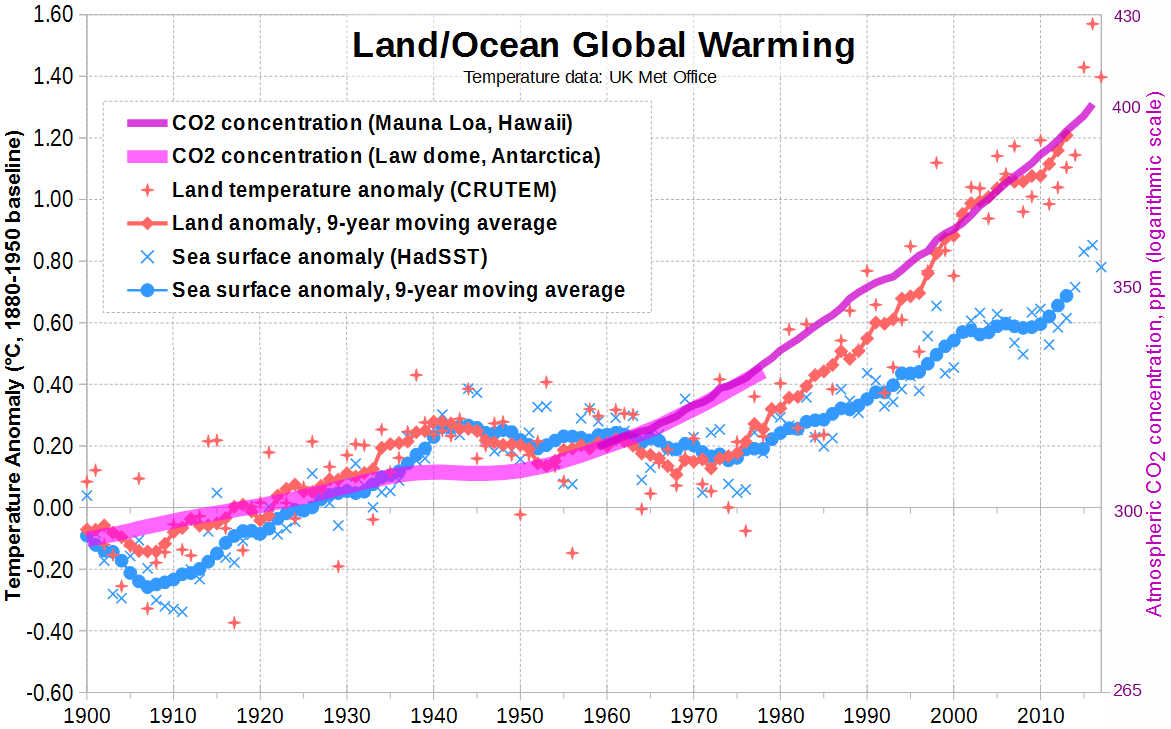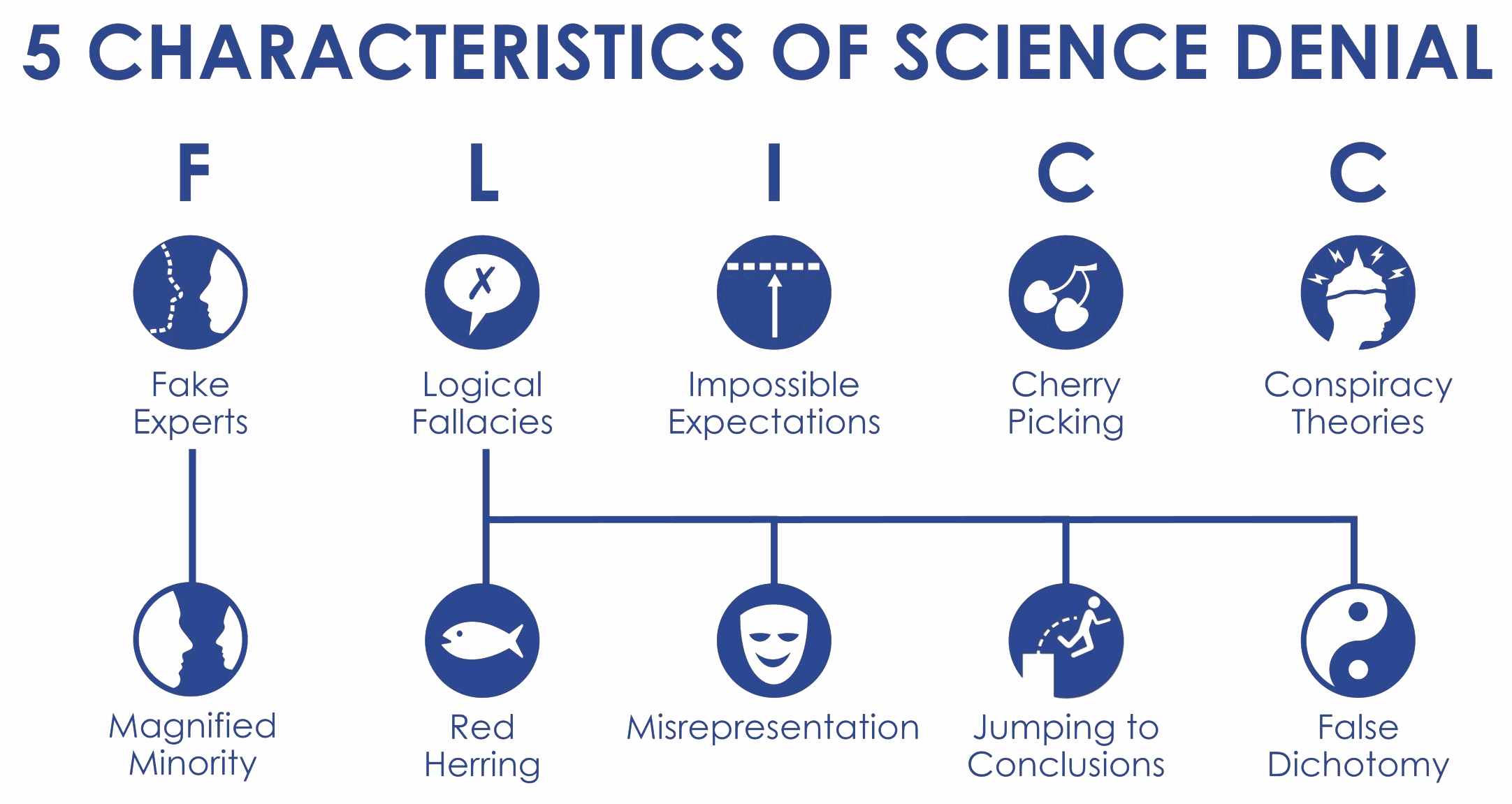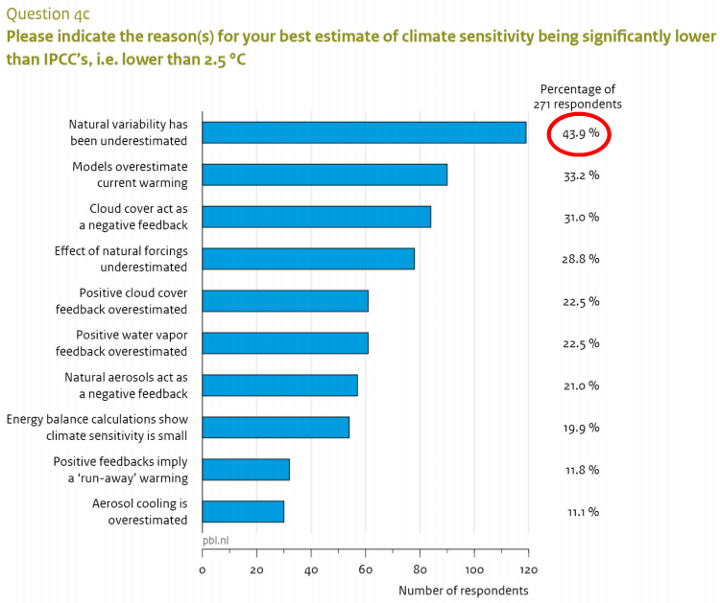What they decline to understand
Thousands of climate scientists are working on all kinds of interesting subjects, from glaciology to oceanography to ecology to atmospheric physics. Some pseudo-skeptics don't understand that and seem to have no inkling of what climate scientists actually do.
Others, however, do understand that there's a large and sometimes-maybe-legitimate scientific endeavor going on, and they are happy to learn about some of that stuff, as long as they don't have to accept that human emissions cause warming.

While the land (red) has warmed faster than the ocean surface (blue), sea surface temperatures have the most impact on the global average because oceans cover 71% of earth’s surface. If global warming were caused by internal variability in the oceans (in other words, if the ocean surface warmed up because less cold deep water were being exchanged with it), then sea surfaces should warm as fast as the land. And if global warming were caused by the sun, days would warm faster than nights; in fact the opposite is true. Besides, solar output is measurable and has been decreasing. It is likely that warming in the 1920s and 1930s was caused largely by internal variability, and cooling in the 1950s, 60s and 70s has been attributed largely to internal variability plus aerosol emissions that happened before environmental regulations were introduced to reduce smog. Unlike CO2, aerosols disappear quickly from the atmosphere when emissions stop. So as our air got cleaner, the effect of CO2 became dominant.
Other things they're reluctant to accept include "global warming is dangerous" and "the problem can be solved" (and if you ask me, it isn't even that hard anymore).
The 5 characteristics
Whether the topic is climate change, lung cancer’s link to smoking, vaccines & autism, AIDS or MSG, denial of scientific findings relies on a set of techniques that can be summed up by the acronym FLICC:

Fake experts: climate science is huge and complex field, as you can see from IPCC reports that need 4,000 pages merely to summarize the state of the field. No expert knows everything about it, as the field has numerous specializations. While many articles on denial blogs are written by “scientists” (such as computer scientists or geologists), most articles are not written by contrarian climate scientists, and contrarians themselves are not experts in most of the subspecialties they criticize. Pseudo-skeptics trust people with little or no credentials in the field, and may even think they themselves are experts after reading a pseudo-skeptic book or two. So when TV networks put Bill Nye on the screen to face off against an AGW pseudo-skeptic, other pseudo-skeptics may point out that Bill Nye is not a climate scientist?—?while cheering on the other guy, who is not a climate scientist either.
Magnified Minority: Though 3% of experienced climate scientists disagree with the consensus, media often give pseudo-skeptics 50% screen time. There is another small minority of scientists, and perhaps the occasional climatologist, who believe there will be much more warming than typically thought?—?we might call these “alarmists”. But some media treats the consensus position itself as “alarmist”, so instead of pitting “contrarians” against “alarmists”, it’s “contrarians” versus “mainstream scientists whom we call alarmists to discredit them”.
Logical fallacies: Most pseudo-skeptic beliefs are based on logical errors and/or an absence of knowledge and context. Most myths about climate change can be described in terms of a few fallacies (see below).
Impossible expectations: demanding more precision and more perfect information than climate science can realistically deliver. For example, J.S. Sawyer estimated in 1972 that by the year 2000, atmospheric CO2 levels would rise about 25% compared to 1969 and that global temperatures would rise 0.6°C. Temperatures did in fact rise slightly more than 0.6°C by the time CO2 rose 25%, but it took until after 2010 for this to happen; I assume this is because early estimates of the rate at which carbon sinks (oceans and vegetation) absorb CO2 were too low. Most people would see this as a remarkably accurate prediction, especially since the temperature record in 1972 showed no hints that temperatures were about to rise. Pseudo-skeptics, however, seize upon the imperfection of the prediction as ‘another example’ of why we can’t trust climate science. Similarly, the 1995 IPCC projections (unlike the 1990 and 2000 ones) substantially underestimated the amount of warming that would occur by 2016. Upon learning this, a pseudo-skeptic I spoke with saw it as more evidence of bad science. (“so you’d disagree with anyone who calls the IPCC alarmist?” I asked. “Alarmists don’t underestimate.” He ignored the question.)
Cherry picking: cherry picking is another logical fallacy, but pseudo-skeptics tend to use it far more than the others. For example, the pseudo-skeptic says correctly that the antarctic is gaining sea ice, that one study (controversially) says it’s gaining land ice, and that specific parts of Greenland are gaining ice. But they avoid the bigger picture: the water around Antarctica has warmed up, it may be losing land ice, the arctic is quickly losing ice, Greenland as a whole has been losing ice at an accelerating pace for about 13 years, and far more glaciers are losing ice than gaining ice. They also cherry-pick predictions from individualclimatologists that turned out to be inaccurate, while ignoring predictions from contrarians that were more wrong (past contrarians predicted imminent cooling. Since that didn’t happen, remaining contrarians tend to imply it’s impossible to predict climate?—?a concept that will allow denial to continue forever, no matter what happens).
Conspiracy theories: last but not least, pseudo-skeptics need a way to explain why most climate scientists came to the “wrong” conclusion, so conspiratorial thinking fills in the blanks. I’ve seen claims of conspiracy or corruption many times, but always with a striking lack of detail. I’ve never encountered a complete story: why it happened, when it happened, who did it (specific people), and how it was pulled off. The best they can do is misunderstand a handful of leaked emails. This makes sense if the idea of conspiracy, or corruption, or a vast global network of incompetent scientists, is all just a backdrop?—?a curtain hastily installed to cover up the consensus so it can be ignored. But there is another interpretation for this lack of detail. Perhaps the idea of conspiracy or corruption is actually the primary belief held by most pseudo-skeptics, but because there is so little direct evidence for it, pseudo-skeptics are forced to rely on indirect evidence in the form of scientific findings that are “flawed” according to black-belts in FLICC-fu.
“Conspiracy theories turn out to be unusually hard to undermine or dislodge; they have a self-sealing quality, rendering them particularly immune to challenge.” - Conspiracy Theories: Causes and Cures
“the more participants believed that Princess Diana faked her own death, the more they believed that she was murdered” - Dead and Alive … Contradictory Conspiracy Theories
Here are the main logical fallacies:
- Red Herring: a minor detail used to mislead or derail a discussion. For example, pseudo-skeptics may point out that CO2 is a “trace” gas (less than 0.1% atmospheric concentration). They can admit that all plant life would die without CO2, yet claim that a trace gas can’t possibly have a noticeable effect on climate. This is a red herring and an example of the “argument from incredulity”. Of course, there are many examples of small things making a clear difference: microscopic windshield coatings to reduce glare, tiny pits that increase airplane fuel efficiency, fluoride in water. Another example: CO2 dissolved in water is carbonic acid, and causes the ocean’s pH to fall toward the “acid” side of the pH scale. We call this “ocean acidification”. However, ocean water is on the alkaline (non-acid) side of the pH scale, so pseudo-skeptics distract by questioning the intellect of people who use the word “acidification”. In short, if sea horses start dying, it’s okay because they’re not really horses!
- Misrepresentation (straw man or half-truth): misstating scientific predictions or findings. For example, pseudo-skeptics may misrepresent the 2nd law of thermodynamics to “prove” that the greenhouse effect can’t be real. Or they pretend that scientists are certain about precisely how much warming CO2 will cause, and then attack a certainty that doesn’t exist. Or they misrepresent how scientists reached their conclusions, to demonstrate a “circular reasoning” that doesn’t exist. Or they quote an erroneous news article that misstated a scientific prediction. They might even find a prediction that says “by 2050” and call it “failed” because it hasn’t happened yet. The list goes on and on.
- Jumping to conclusions: when you really want something to be true, it’s easy to ignore details that contradict your conclusion. For instance, the urban heat island effect may raise some temperature readings due to urbanization. Also, satellite records interpreted by UAH show less warming than other records. So they jump to the conclusion that warming has been small. However, almost the same warming can be seen based on rural temperature stations and rural records alone; and weather balloons and high-resolution proxy records also show similar warming. In fact, ocean records are the main factor in global average temperatures, since they make up 71% of Earth’s surface. As for satellites, the same satellite records interpreted by RSS show significantly more warming than UAH. Why? Satellites don’t measure temperature, and the data is very tricky to interpret. Satellites show day-to-day differences reliably, but the readings drift in multiple ways as years and decades pass. Both UAH and RSS have repeatedly changed how they compensate for drift, which in turn changed their temperature trends retroactively.
- False dichotomy: incorrectly assuming there are only two possibilities, then showing one of the possibilities is wrong to “prove” the other. The most common false dichotomy is to point out that CO2 lagged temperature before humans started burning fossil fuels.
The 3 Pillars
The “3 Pillars model” views denial from the more strategic perspective of “how can we create denial?”
- Use disinformation to show people it’s “bad science”
- Claim the bad science is driven by radical ideology and leads to undesirable social consequences (even though conservative climate change solutions exist)
- Demand equal time in the media
The three pillars are related to the FLICC model like so:
- Logical fallacies / Cherry picking / Impossible expectations
- Conspiracy theories
- Magnified minority / Fake experts.
Denial Divergence
A study by Verheggen et al. (2014) shows that contrarians don’t agree about what, if not CO2, causes the observed warming.

More than one answer was allowed. On average, those disagreeing with the IPCC gave 2.45 reasons why, yet not one of these answers broke the 50% mark, i.e. there is no consensus among contrarians. And while “natural variability” was the most common answer, it is also pretty vague; many factors go into “natural variability”. Climatologists will tell you that “natural variability” goes up and down?—?not just up. Source: PBL NEAA. Question 3c (Figure 6) in the original Verheggen study also suggests that contrarians do not agree on what, if not CO2, causes global warming.
Denial may seem like a single unified movement, but individual pseudo-skeptics often have substantially different beliefs from each other.
This gives outsiders the impression that pseudo-skeptics are full of crap. Since the scientific consensus originally formed about 38 years ago, if there were any viable alternative to the mainstream theory, they’ve had more than ample time to find it and rally around it.
Those on the inside probably see the situation quite differently. My guess is that on the pseudo-skeptic hub WattsUpWithThat, these differences play out as arguments, which give pseudo-skeptics faith that they are “scientific” because they are having a “scientific debate”. This debate is not about whether humans cause a lot of warming, since they agree the answer is no?—?but more about which of the contrarian ideas is best.





